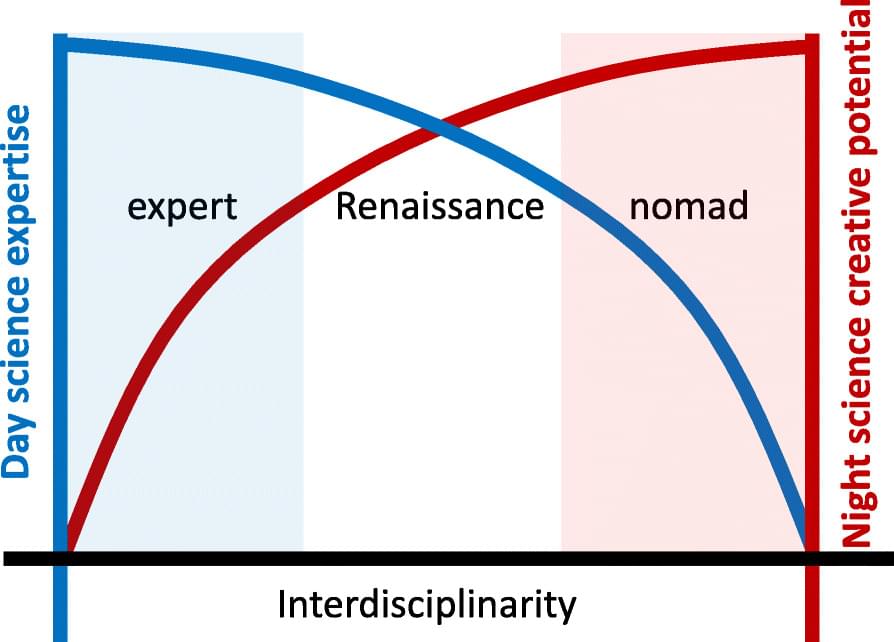The next head of Europe’s CERN physics laboratory said Thursday that he favored moving forward with plans for a giant particle collider far more powerful than the collider that discovered the famous “God particle”



Nuclear fission has powered our world and medical advancements for decades, yet some of its secrets have remained elusive.
One of the biggest puzzles? What exactly happens when an atom’s nucleus splits apart at its “neck rupture” point.
Aurel Bulgac, a physics professor at the University of Washington, has been delving into this very question. He and his team set out to simulate the intricate particle dance during this critical moment of fission.


True humility is rare today. It takes courage and a strong stance. It’s the story of Grigori Perelman, who proved the Poincaré conjecture — the only one of the seven Millennium Prize Problems solved by humanity. 1️⃣ In 1990s, Perelman worked at UC Berkeley. Top universities tried to hire him. A hiring committee at Stanford asked him for a C.V. to include with requests for letters of recommendation. But Perelman said: “If they know my work, they don’t need my C.V. If they need my C.V., they don’t know my work.” he received several job offers. But he declined them all. 2️⃣ In 2002–2003, he posted three manuscripts on arXiv where he solved the Poincare problem. On a PREPRINT server. Not in a journal! He did not care about publishing them in Nature. He did not care about getting them peer reviewed. He just wanted to make his work publicly available. Several leading math groups immediately started checking his proof. 3️⃣ In 2006, he was awarded a Fields Medal for his work on the Ricci flow and Poincare conjecture. But Perelman declined it: “[The prize] was completely irrelevant for me. Everybody understood that if the proof is correct, then no other recognition is needed.” He did not attend the ceremony. He was the only person to have ever declined the prize. 4️⃣ In 2010, Perelman was awarded a Millennium Prize ($1,000,000). He did not attend a ceremony in Paris as well. He considered the decision of the Clay Institute unfair because he wanted to share the prize with Richard Hamilton (who had a big influence on Perelman in 1990s). “The main reason is my disagreement with the organized mathematical community. I don’t like their decisions, I consider them UNJUST.” ❗️Why I am writing all this? Because: There’s no fairness in academia. It’s unjust and often illogical. It’s full of competition and unkindness. Perelman was very sensitive to it. So, he left mathematics… IF we don’t want to lose brilliant minds like this… IF we want our kids to love science as they grow up… Then we should focus on making it a better place. Less pressure on tenure track professors. No pursuit of metrics. No emphasis on awards. More mentorship and quality research. We need it. #science #research #engineering #mathematics #scienceandtechnology

At 9:52 a.m. EST, the SpaceX Dragon spacecraft successfully docked to the forward port of the International Space Stations Harmony module.
This mission, SpaceX’s 31st commercial resupply service for NASA, delivered over 6,000 pounds of scientific equipment and cargo to the space station. The journey began at 9:29 a.m. on November 4, when a SpaceX Falcon 9 rocket launched from Launch Complex 39A at NASA’s Kennedy Space Center in Florida.

In a world where choices seem endless, could it be that our ‘free will’ is nothing more than an illusion?
When it comes to things like choosing a morning run over an extra hour of sleep, opting for an apple instead of that enticing pint of ice cream, or quitting your job on a whim…
…What’s truly guiding these decisions? Is it willpower, biology, environment, or perhaps a unique strength of character we’ve built over time?
Or… could it be something else entirely, something beyond our control?
Here’s where our guest, Dr. Robert Sapolsky — a renowned Professor of Biology, Neurology and Neurosurgery at Stanford University — offers us a slightly unsettling, yet eye-opening, perspective.
He suggests that every decision we make — from the podcasts we tune into, to judges making a case verdict, to choosing our life partner — isn’t shaped by any sort of conscious control or free will. Instead, he believes our actions are driven by factors beyond our grasp and influence.

Scientists in Virginia are looking for mysterious dark matter — and have turned to really old rocks.
The substance, which makes up more than 80 percent of all matter in the universe, shapes and affects the cosmos. But it is entirely invisible and remains undetectable by normal sensors and techniques.
Analyzing billion-year-old rocks, researchers at Virginia Tech hope to find traces of dark matter. The idea was first proposed in the 1980s. Technological advances since then led them to revisit the idea. What if there were traces in Earth’s minerals?

For Bob Dylan, the feel of a particular genre—be it country, rock, or blues—served to inspire his ideas that were searching for expression beyond boundaries. It was the recklessness and volatility of rock that allowed him to express the grudging anthem of “Like a Rolling Stone,” and it was the country medium that enabled “Lay Lady Lay.” The boundaries of a specific genre would have restricted the reach of Dylan’s songwriting. Arguably, Dylan writes and performs his best work precisely because he is able to transcend the constraints of particular musical styles. Dylan, then, is a prime example of a “Renaissance mind,” but the phenomenon is general: music has genres, but the musicians themselves may be most creative when they explore the full realm of possibilities within their reach.
Similarly, the borders between scientific fields and disciplines are not natural boundaries; really, there are no boundaries. Disciplines, fields, and subfields are just one way of clustering knowledge and methodology on increasingly fine-grained levels, but this clustering is not unique, and there is not even an obvious optimality criterion for the clusters. Many boundaries may simply reflect the way in which a field developed historically. Working within the confines of a field may help us to structure insights and ideas, but—similar to a musician’s fixation on a certain genre—the boundaries can impede our creativity and restrain our advances into certain directions. During our most creative night science moments, when we come up with potential solutions for problems and dream up hypotheses, when we need to make new and unexpected connections, we are better off if our mind is free to transcend the fields and disciplines. After all, if there were no boxes, we would not have to think outside of them. This kind of thinking may also be called horizontal [7] or lateral thinking [8].
To transgress the boundaries of a field, it is highly useful to have an understanding of multiple disciplines, either as a person or as a team, as this provides more opportunities to make connections. In the modern practice of science, the interdisciplinary aspect is often interpreted as a collaboration between scientists that work side by side in different disciplines. But true interdisciplinarity—even in a collaborative framework—requires us to think across fields. At some point, someone on the team will need to have that idea, and that someone will likely be the one with access to multiple fields. Thus, while the framework of science is disciplinary, a scientist’s creativity benefits from interdisciplinarity. This may explain why so many eminent biologists were originally educated in a different field: just think of Max Delbrück, Mary-Claire King, or Francis Crick. But there is also an important role for large and diverse teams: if more varied ways of thinking, more diverse ideas come together at the water fountain, they provide a fertile ground for making connections across borders—the modern workplace replacement of the traditional café, where creative people have traditionally met to exchange ideas [9].

New research underscores the role of the immune system in depression, linking inflammation to poor response to standard antidepressants and highlighting the importance of personalized medicine in addressing different biological patterns in depressed individuals.
A collaborative study between researchers from the UK and Italy has uncovered new insights into the biological mechanisms of major depressive disorder (MDD), with a particular focus on the role of the immune system.
The researchers examined “gene expression,” which refers to the process by which the instructions in our genes are activated, influencing bodily functions.